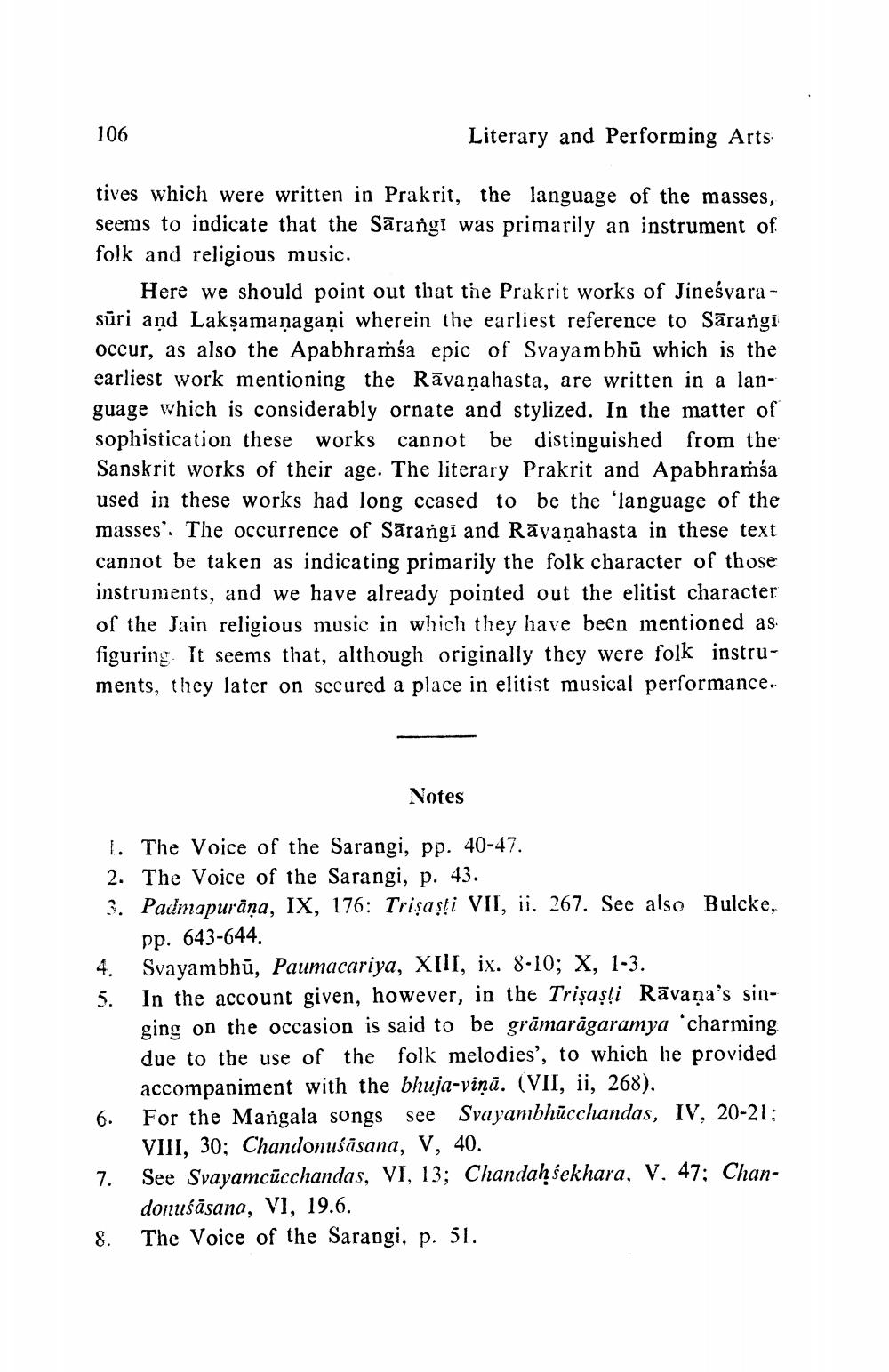________________
106
Literary and Performing Arts
tives which were written in Prakrit, the language of the masses, seems to indicate that the Sārangi was primarily an instrument of folk and religious music.
Here we should point out that the Prakrit works of Jineśvara - sūri and Laksamanagani wherein the earliest reference to Sārangi occur, as also the Apabhraíśa epic of Svayambhū which is the earliest work mentioning the Rāvanahasta, are written in a language which is considerably ornate and stylized. In the matter of sophistication these works cannot be distinguished from the Sanskrit works of their age. The literary Prakrit and Apabhramsa used in these works had long ceased to be the language of the masses'. The occurrence of Sārangi and Rāvanahasta in these text cannot be taken as indicating primarily the folk character of those instruments, and we have already pointed out the elitist character of the Jain religious music in which they have been mentioned as figuring. It seems that, although originally they were folk instruments, they later on secured a place in elitist musical performance.
Notes
1. The Voice of the Sarangi, pp. 40-47. 2. The Voice of the Sarangi, p. 43. 3. Padmapurāņa, IX, 176: Trişaști VII, ii. 267. See also Bulcke,
pp. 643-644. 4. Svayambhū, Paumacariya, Xill, ix. 8-10; X, 1-3. 5. In the account given, however, in the Trişaşți Rāvana's sin
ging on the occasion is said to be grāmarāgaramya charming due to the use of the folk melodies', to which he provided accompaniment with the bhuja-viņā. (VII, ii, 268). For the Mangala songs see Svayambhūcchandas, IV, 20-21:
VIII, 30; Chandonušāsana, V, 40. 7. See Svayamcūcchandas, VI, 13; Chandah sekhara, V. 47; Chan
donuśāsano, Vi, 19.6. 8. The Voice of the Sarangi, p. 51.




